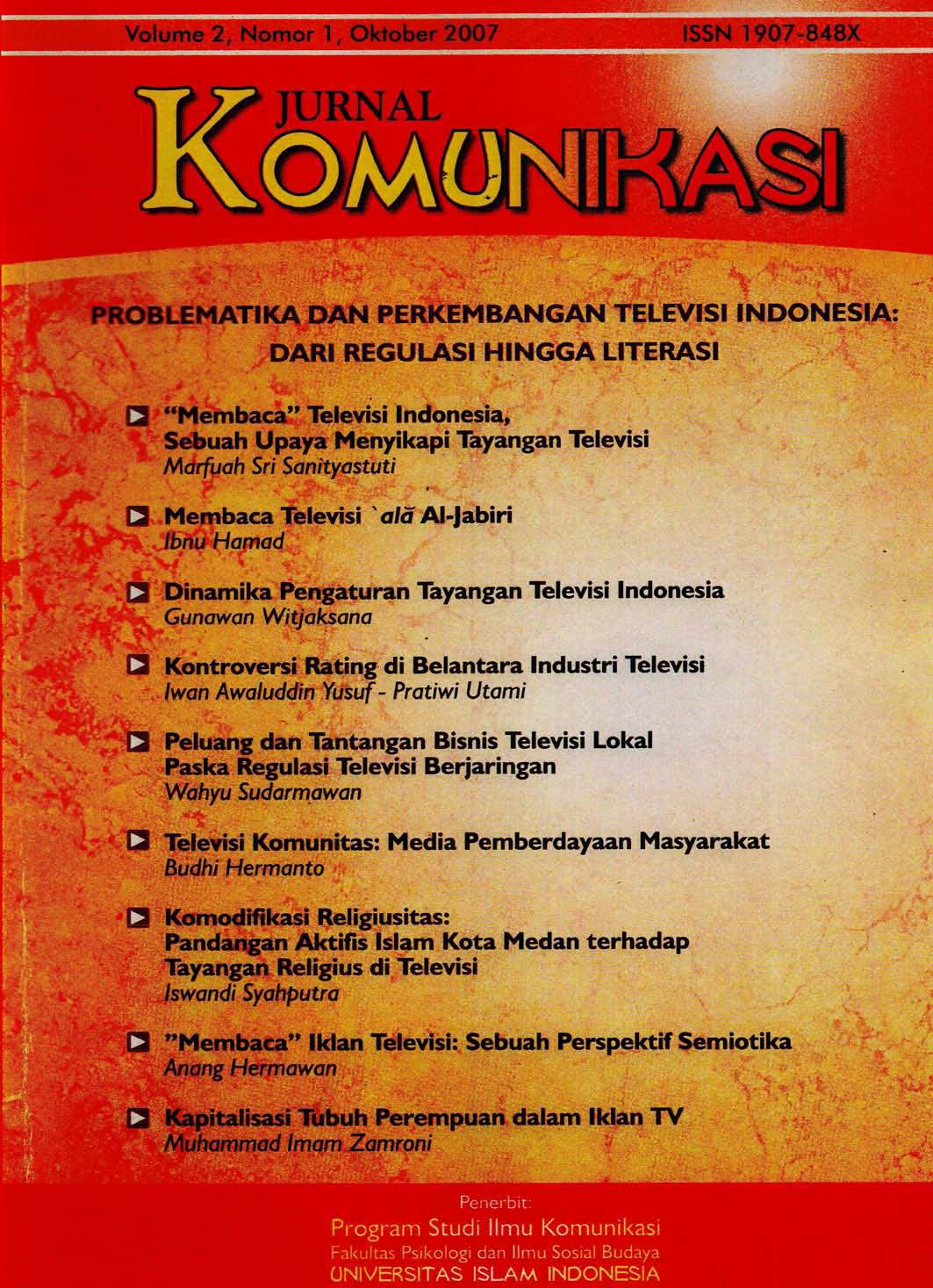Main Article Content
Abstract
Rating indeed determines selling price of the program to the advertiser. The higher rating brings the greater number of advertiser. The greater advertiser then means a better life of a TV station. As a consequence, almost all TV station is competing to produce a program that could “buy” market and advertiser, even though they must decrease the quality of TV program's contents. In the other hand, rating itself is a controversy. The rating system gets sharp critics due to its weakness, both from methodological and technical sides. Basically, rating couldn't represent a deeper viewing behavior of the audience, the audience's focus when watching TV, et cetera. This article will elaborate how rating works in Indonesian TV industry. The relation between rating, advertisement, advertiser, and the market share will be explained. The discussion in this writing will develop on the subject of the debates and controversy around rating.
Article Details
Authors who publish with this journal agree to the following terms:
- Authors retain copyright and grant the journal right of first publication with the work simultaneously licensed under a Creative Commons Attribution License that allows others to share the work with an acknowledgement of the work's authorship and initial publication in this journal.
- Authors are able to enter into separate, additional contractual arrangements for the non-exclusive distribution of the journal's published version of the work (e.g., post it to an institutional repository or publish it in a book), with an acknowledgement of its initial publication in this journal.
- Authors are permitted and encouraged to post their work online (e.g., in institutional repositories or on their website) prior to and during the submission process, as it can lead to productive exchanges, as well as earlier and greater citation of published work (See The Effect of Open Access).
